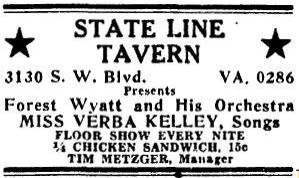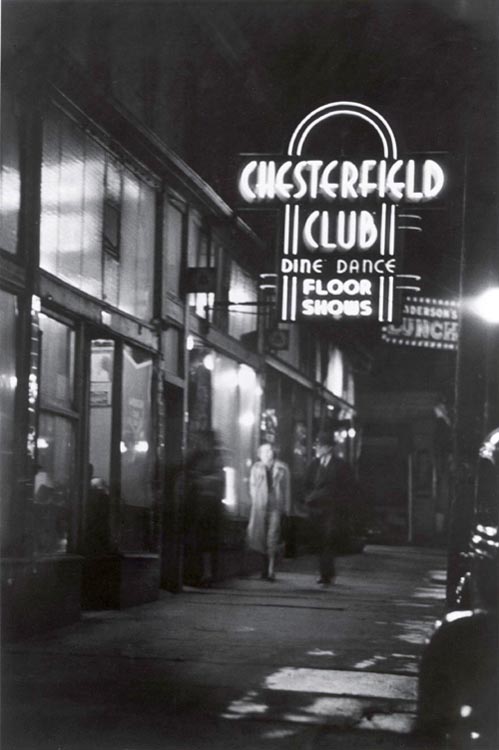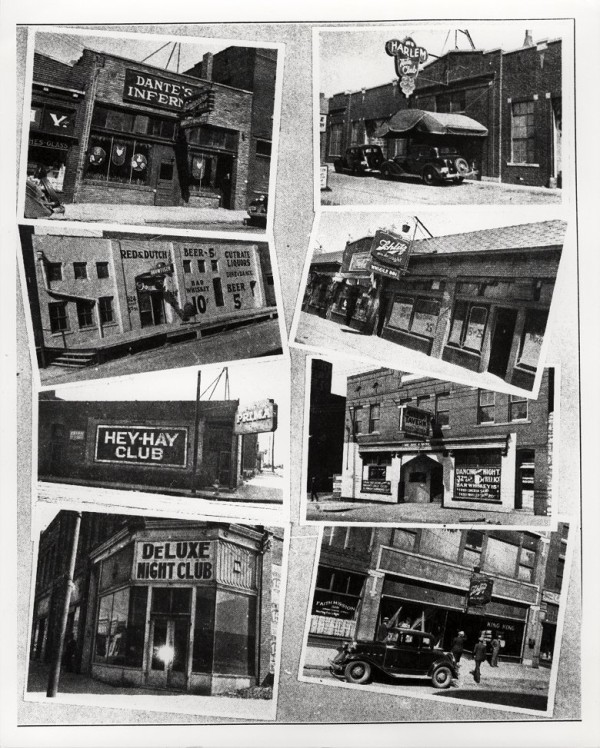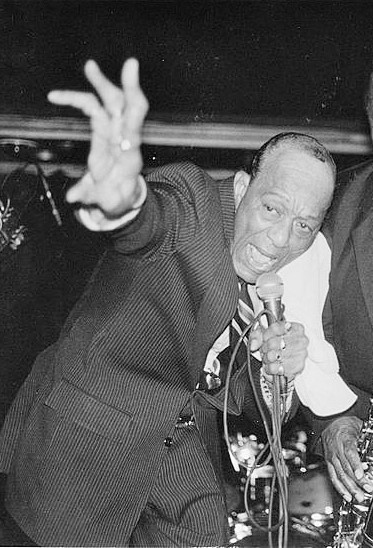Old-Timey Jazz Joints
Boss Tom Pendergast, State Line Tavern, Chesterfield Club, Hey Hay Club, Milton Moriss, Reno Club, Subway Club, Sunset Club, Piney Brown
An old weekly newspaper called The Future, which focused on, well, the future of Kansas City, said that Kansas City had “more night clubs per capita… than in any other city in the United States.” During a time when the country was officially dried out due to Prohibition, Kansas Citians were still making, buying, drinking and selling hooch. This was thanks to boss Tom Pendergast and his political power over the police in the area. Below are just a few of the infamous jazzy nightclubs of Kansas City’s past from before, during and after prohibition.

State Line Tavern – Located, you guessed it, right on State Line Road at 3205 Southwest Boulevard. This was one cool and clever joint, for half the building sat on the Missouri side, and the other half on the Kansas side. A thick white line divided the bar to help distinguish the two sides. During the Prohibition era, drinkers, gamblers and musicians would flee to the Missouri side if the Kansas police raided the joint. And if the Missouri police decided to show up, they would just mosey on over to the Kansas side. And if both state policemen showed up, well, they probably ran. Now, the State Line Tavern is a parking lot.

Chesterfield Club – Originally located at 320 E. 9th Street downtown, The Chesterfield Club boasted much more than its beautiful music. This raunchy gentlemen’s club offered drinks and meals served by waitresses dressed in nothing but cellophane aprons and red stilettos. To go along with the seedy atmosphere, the women bared pubic hair shaved into a heart, diamond, spade or club. It was so unholy that after the club lost protection from boss Tom Pendergast when he was indicted for income tax evasion, the city actually shut it down as a public nuisance. A throwback club to the Chesterfield now resides at 1400 Main St. and shares residence with the Main Street Alamo Drafthouse Theater. However, it’s a little more family-friendly now.
Milton Moriss’s Hey Hay – Owned by Milton Moriss himself, a well-known saloon owner throughout the 1930s, the Hey Hay Club, located at 4th and Cherry, stayed true to its name. Patrons sat on real hay bales, which were later used to feed livestock, while enjoying the quick melodies of Lester Young, Count Basie and many more. The stages were made of old hay wagons. During the Prohibition Era, the club fashioned signs exhibiting 25 cent whiskey shots along with 25 cent Mary Jane joints. Milton often said “since both were illegal … why not?” The Hey Hay only lasted a few years, opening in 1931 and closing in 1938. Milton went on to own several other taverns such as the Novelty Club and Milton’s Tap Room. Today, the original location is a massive, concrete parking garage.

Reno Club – Said to be the “queen” of all Kansas City jazz clubs and jazz “king” Charlie “Yardbird” Parker’s favorite club, the Reno Club, located at 602 E. 12 St., first opened in the early 1930s. It didn’t start out as a popular place. It took the moxie of “Count” Basie’s band, the Basie band, becoming the house jazz band to bring people in. Soon after, patrons and other musicians flocked to the Reno Club. Back in the 1930s, 12th Street was the jazz hub. “Fifty clubs featuring live music in a six-block area,” Mary Lou Williams recalled. A paved parking lot covers the land where the Reno Club once stood.

Subway Club and The Sunset – Piney Brown became a legend in the 18th and Vine district during Jazz’s golden years (1920s and ‘30s). He came from the south during World War I and soon made a name for himself in Kansas City. Eddie Barefield described “Piney” as “a patron saint to all musicians.” He owned two joints, one named the Subway Club (located under the street much like the subway, at 1516 18th Street), and the other, The Sunset. Piney opened the Subway first, but soon had to close because of funding issues. Next, Piney opened the Sunset, located at 12th and Hyland. Lucky for him, loyal musicians such as Count Basie and Ben Moten followed him to the new location and turned it into one of the most popular jazz joints of the time.











